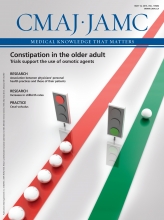Tramadol is an analgesic with 2 postulated mechanisms of action
Similar to venlafaxine, tramadol augments serotonergic and noradrenergic neurotransmission, although its main active metabolite, O-desmethyltramadol (M1), is an opioid. Both mechanisms of action are thought to contribute to tramadol’s analgesic effects.1
Tramadol’s metabolism is variable and unpredictable
Conversion of tramadol to M1 is catalyzed by the highly polymorphic cytochrome P450 isoenzyme 2D6 (CYP2D6), the same enzyme responsible for converting codeine to its active metabolite, morphine. People with the “poor metabolizer” phenotype have absent or reduced CYP2D6 activity and form less opioid metabolite for a given dose, which results in less analgesia.1 The same is true of patients receiving medications that inhibit CYP2D6, such as paroxetine and bupropion. Conversely, patients exhibiting the “ultra-rapid metabolizer” phenotype are particularly prone to tramadol’s opioid-like effects.1 The prevalence of these phenotypes varies by ethnic background (Appendix 1, available at www.cmaj.ca/lookup/suppl/doi:10.1503/cmaj.121592/-/DC1) and is expected to be widely divergent between ethnic groups in Canada.
Tramadol is a modestly effective analgesic
Canadian guidelines suggest tramadol or codeine as the first-line agent for mild to moderate pain.2 Tramadol has been shown to be modestly effective for osteoarthritis-related pain in placebo-controlled trials.3 In patients with neuropathic pain, tramadol’s efficacy is comparable to that of gabapentin, tricyclic antidepressants and carbamazepine.4
Opioid dependence, withdrawal and toxicity may occur with tramadol use
Canadian guidelines suggest that the risk of addiction is lower with tramadol than with other opioids.2 However, this risk depends on genotype; tramadol abuse is well described in some Middle Eastern countries,5 where the CYP2D6 ultra-rapid metabolizer phenotype is prevalent (Appendix 1). Opioid withdrawal is common following chronic tramadol use.6 As with conventional opioids, tramadol has been linked to apnea and death.5 Despite being metabolized to an opioid, tramadol is not scheduled in the Canadian Controlled Drugs and Substances Act.
Other toxic effects include seizures and serotonin syndrome
Generalized seizures and serotonin syndrome can occur with tramadol use, sometimes with modest doses, and particularly when the drug is combined with other serotonergic or proconvulsant agents such as antidepressants.1,5
CMAJ invites submissions to “Five things to know about …” Submit manuscripts online at http://mc.manuscriptcentral.com/cmaj








